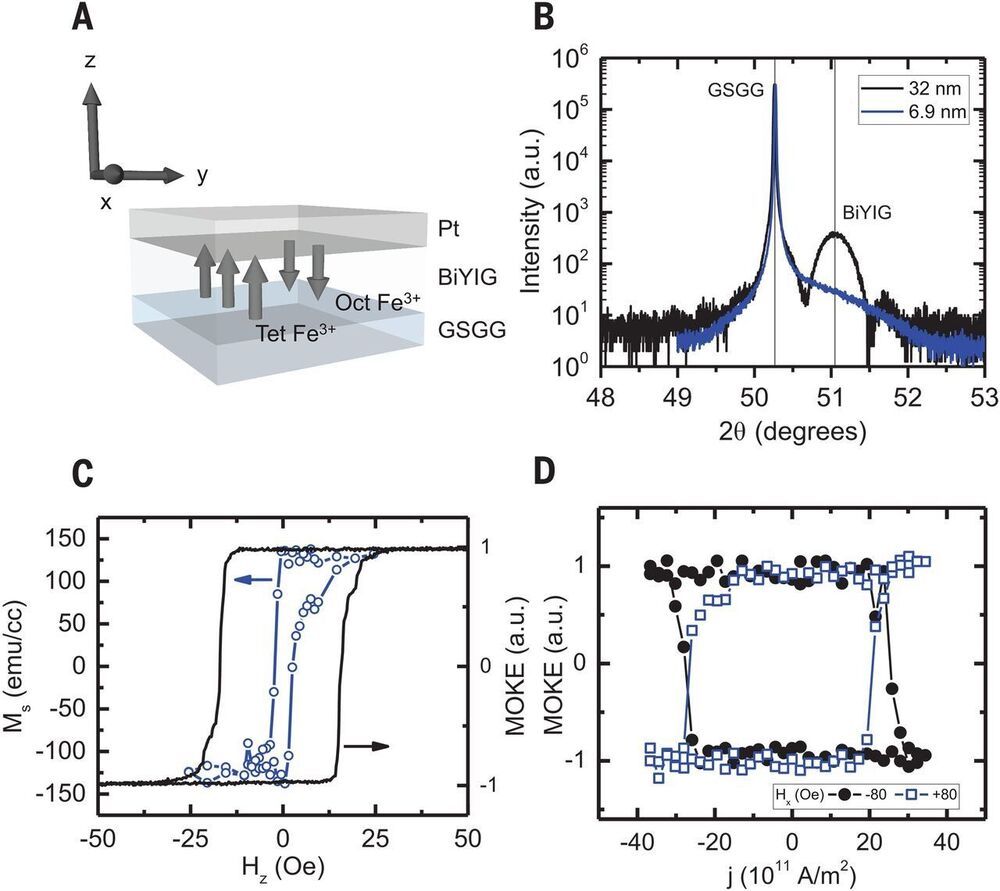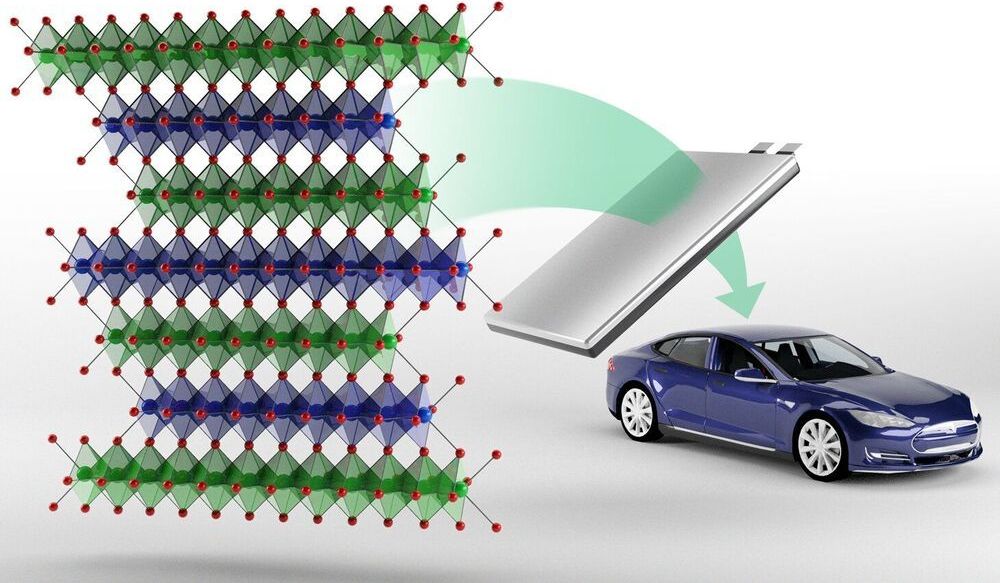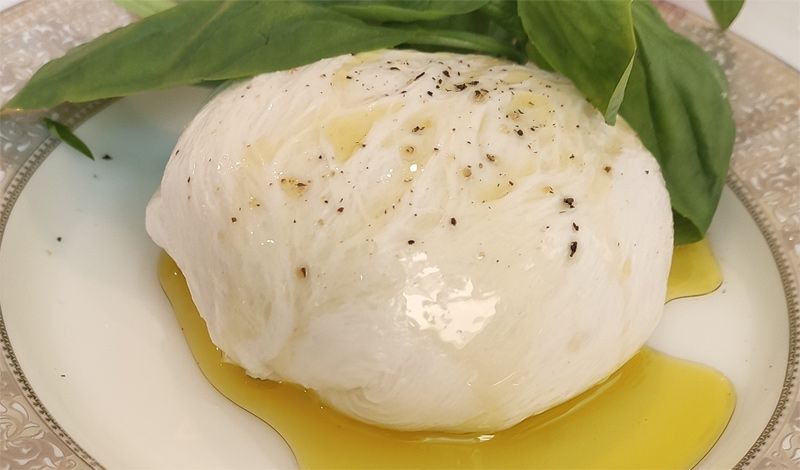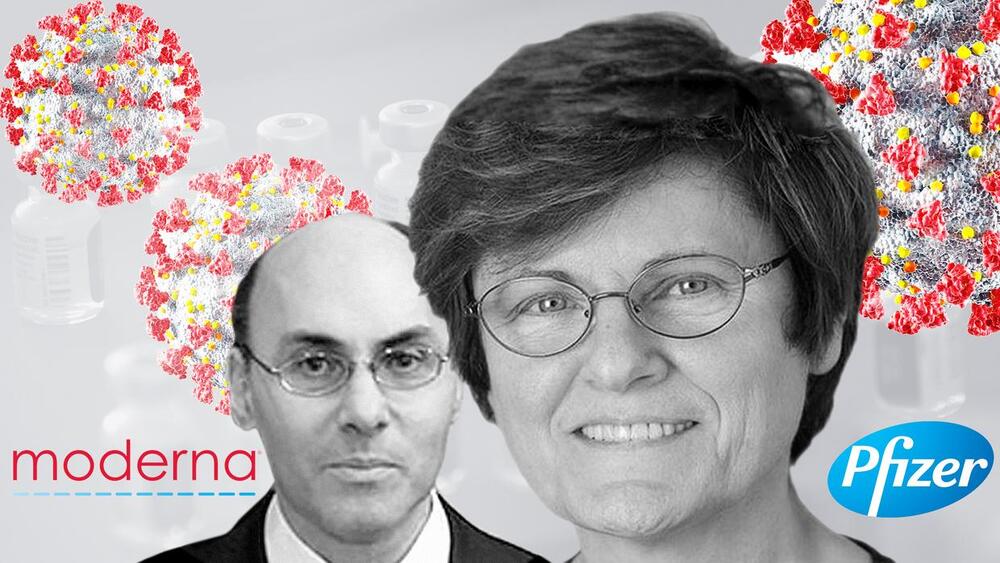
Get the latest international news and world events from around the world.


Speed of magnetic domain walls found to be fundamentally limited
A team of researchers from MIT and several institutions in Korea has found that the speed of magnetic domain wall movement is fundamentally limited. In their paper published in the journal Science, the group describes testing a theory regarding the maximum speed of domain walls to prove them correct. Matthew Daniels and Mark Stiles with the National Institute of Standards and Technology in the U.S. have published a Perspective piece outlining the work by the researchers in the same journal issue and sum up the implications of their findings.
One of the basic tenets of Einstein’s theory of special relativity is that there is no particle that can travel faster than the speed of light. In this new effort, the researchers have found a similar boundary for magnetic domain walls.
Materials that are magnetic have domains in which ordered spins are separated from one another by boundaries known as domain walls. Prior research has shown that such walls can be moved by applying an electric current. This particular aspect of magnetic materials has formed the basis of research on racetrack memory. And because the speed of movement of the domain walls determines the speed of the memories created using them, scientists have been pushing them faster and faster. Logic suggests that there must be a limit to how fast the domain walls can be pushed, however, thus establishing a limit to how fast such memories can operate. In this new effort, the researchers have found that fundamental limit.

New class of cobalt-free cathodes could enhance energy density of next-gen lithium-ion batteries
Oak Ridge National Laboratory researchers have developed a new family of cathodes with the potential to replace the costly cobalt-based cathodes typically found in today’s lithium-ion batteries that power electric vehicles and consumer electronics.
The new class called NFA, which stands for nickel-, iron-and aluminum-based cathode, is a derivative of lithium nickelate and can be used to make the positive electrode of a lithium-ion battery. These novel cathodes are designed to be fast charging, energy dense, cost effective, and longer lasting.
With the rise in the production of portable electronics and electric vehicles throughout the world, lithium-ion batteries are in high demand. According to Ilias Belharouak, ORNL’s scientist leading the NFA research and development, more than 100 million electric vehicles are anticipated to be on the road by 2030. Cobalt is a metal currently needed for the cathode which makes up the significant portion of a lithium-ion battery’s cost.

Let’s Feed Seaweed To Cows & Reduce Their Methane Burping
Old-time solutions are reappearing as we seek to become a zero-emissions society.
How can the agriculture industry reduce the amount of methane released when cows burp? It’s been a struggle for scientists and policymakers. A new method in which farmers feed seaweed to cows — needing to incorporate only about 0.2% of the total feed intake — indicates that methane levels can be reduced by 98%. It’s a real breakthrough, as most existing solutions cut methane only by about 20% to 30%.


We could travel to new worlds in NASA’s starship Enterprise
Circa 2014
US space agency commissions design for its first warp speed spaceship.

How an immigrant scientist paved the way for covid-19 vaccine
Katalin Karikó saw her early research rejected but she persisted and is now tipped for a Nobel Prize together with her colleague Dr Drew Weissman. Their breakthrough invention is now the key to the Moderna and Pfizer vaccines, and could open the door to new medical cures. (Leer en español)
Epigenetic Aging: How old is your DNA?
Dr. Steve Horvath, a professor of genetics and biostatistics at UCLA, has found a way to measure biological aging – a type of “clock” – based on the methylation pattern of an organism’s genome. Methylations are biochemical processes that modify the activity of a DNA segment without changing its sequence – a type of epigenetic change. This video primer explains the basics of epigenetic clocks, the topic of our interview with Dr. Steve Horvath, coming soon!
Get the show notes here:
https://www.foundmyfitness.com/episodes/epigenetic-clock/
Episode highlights:
• 00:00:09 — A person’s risk of disease is more dependent on their biological age than their chronological age.
• 00:00:09 — Epigenetics refers to processes that can affect gene expression without changing the DNA sequence. Methylation is a type of epigenetic change that occurs over a lifetime in a predictable way and can be used to measure biological age.
• 00:01:17 — The Horvath clock can accurately predict a person’s chronological age based on only the epigenetic information in their blood.
• 00:01:54 — The GrimAge clock can predict the risk and time of onset of cancer, heart disease, and death.
• 00:02:19 — Certain drugs can reverse a person’s epigenetic age, but the effects on biological age are unknown.
• 00:03:09 — The discovery of an anti-aging drug is on the horizon.